If you haven’t already done so, please read the FFY Introduction.
July Overview
Here’s a breakdown of what we’re covering in July:
- Revisit Fall Plan
- Ordering
- Planting/Sowing
- Staking Dahlias
- Harvesting
- Business & Taxes: Keeping up with bookkeeping
- Content Creation: Making it efficient plus favorite backdrops
Before I dive in, how are you? How is your season going? If you are in need a good laugh, I highly suggest watching Farming by Month as Told by The Office Part 1 and Part 2.
For me, this time of year is where I let go of all of my expectations for the season. While it can be easy to dwell on what hasn’t gone right, I do my best to let those float on by and instead focus on what IS working and how I can do better next season. While we course correct when possible, it’s usually better to maintain focus on our winning crops, like the lisianthus and dahlias.
And when I feel down about the varieties I didn’t get around to planting or the entire bed of sunflowers that was eaten by deer, I find hope in the possibilities for next season, and that means revisiting my fall plan that I made in January!

Revisit Fall Plan
Now is the perfect time to start thinking about next season. That might sound crazy, but it will soon be time to start sowing flowers that can be overwintered.
While I use my own Seed Sowing & Planning Spreadsheet for spring and summer (which is shared in January), I’m currently loving and using Johnny’s Seeding Date Calculator for fall. It’s based on their multi-year overwintering trials and you can find it for free here. I didn’t feel the need to reinvent the wheel on this one, so I simply keep it all together with my own spreadsheet on a separate tab.
In order to use the calculator, you need to know your last 10-hour day of the year. You can use a calculator like this one to determine this.
If you’re serious about experimenting with overwintering, especially if you’re in a colder zone, I highly suggest checking out Johnny’s Overwinter Flowers Resources page, where you will find the complete listing of their crop and method videos, plus spreadsheets and PDFs detailing more than 25 cut-flower crops they have successfully overwintered in their Zone 5a unheated tunnel. Their results include yield, rate of survival, and specific variety recommendations!
This is incredibly exciting if you’re in a colder zone (like me)! Until Johnny’s trial, there wasn’t much out there for those of us in Zone 5 or below. Their results are promising, and I hope we find success on our farm as well.
Though slightly cooler, our climate and latitude are similar, so I plan to follow their schedule with only a few slight changes. For reference, Johnny’s research farm is located in central Main, Zone 5a, Latitude 44.6°N, last 10-hour day first week in November. At our farm in Mindoro, Wisconsin, we are Zone 4b, Latitude, 44.0211° N, last 10-hour day first week in November.
Regardless of our locations, their template makes it fairly easy to plug and play to get dates for your unique situation.
Based on their template, our plan looks like this:
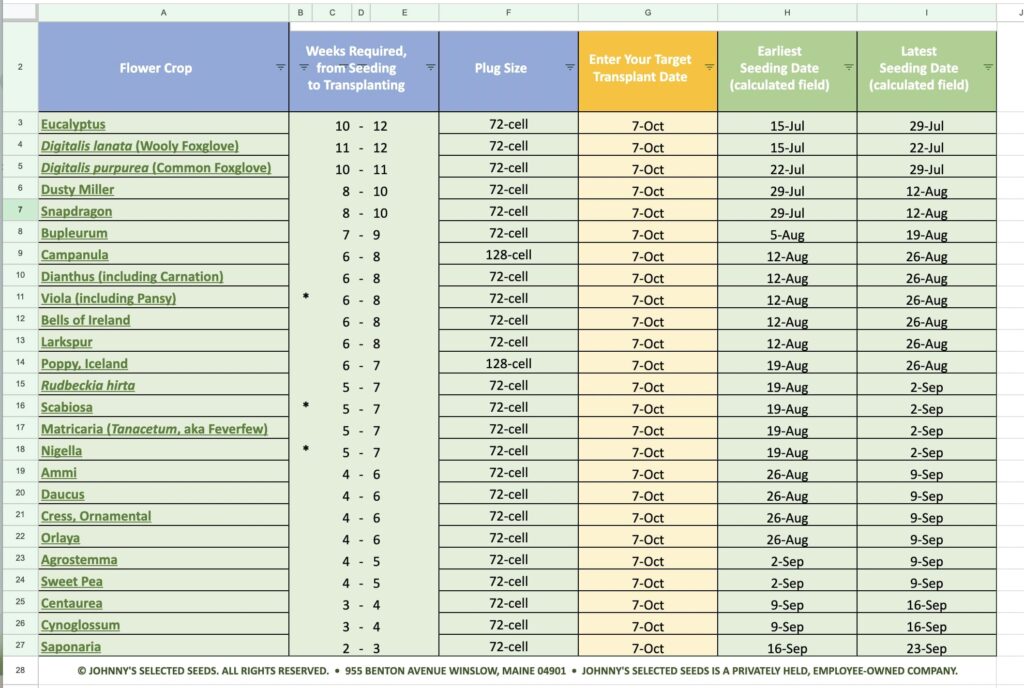
While I don’t plan on doing everything (and am quite skeptical of eucalyptus), I’m particularly interested in snapdragons, foxglove, delphinium, feverfew, saponaria, orlaya, agrostemma, sweet peas. In fact, the best feverfew I’ve ever grown was overwintered in our high tunnel last year (‘Magic Single’ variety).

Ordering
Since we’ll be sowing for some overwinter trials of our own, I’m taking inventory of seeds and ordering. I mostly order through Johnny’s and Ball, but it’s worth mentioning that Floret’s sale is also coming up on August 1. This is a great option if you cannot order wholesale or do not need higher volume. Personally, I only those fun items I cannot get wholesale, and I’m particularly interested in their sweet peas and Dawn Creek’s agrostemma (look sooo good). As noted in plant profile, I also ordered some bare root roses from Grace Rose Farm’s preorder sale. I’ve never ordered before but they have some really cool varieties I’m excited to try (like Francis Meilland, Gentle Trendsetter, Darlington, Sahara Sensation, Quicksand).
Planting/Sowing
This will be our last sowing of fast-growing, single-stem sunflowers. I usually put up a hail mary sowing in late July. If it works, awesome. If not, it’s all good. Some of my absolute-favorite sunflowers for fall are ProCut Peach, ProCut White Nite, ProCut Plum, and ProCut Red. As previously noted, we’ll be starting to sow for our own little overwinter trial here soon based on Johnny’s recommendations.

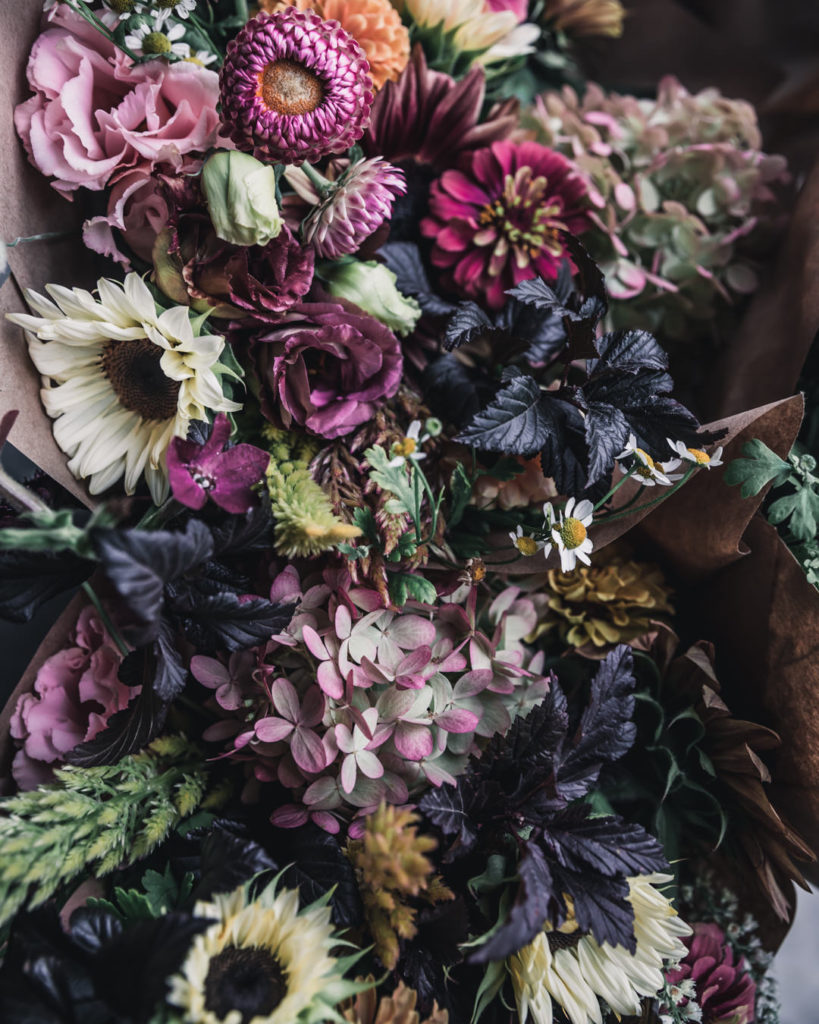



Staking Dahlias
We are currently working on the enormous task of staking all of the dahlias. We use either wooden stakes or metal T-Posts (whatever we have) and wrap twine around them. It’s a lot of work, but I know we won’t regret it as the season progresses. This not only helps them from toppling over, but also keeping the rows tidy and manageable.
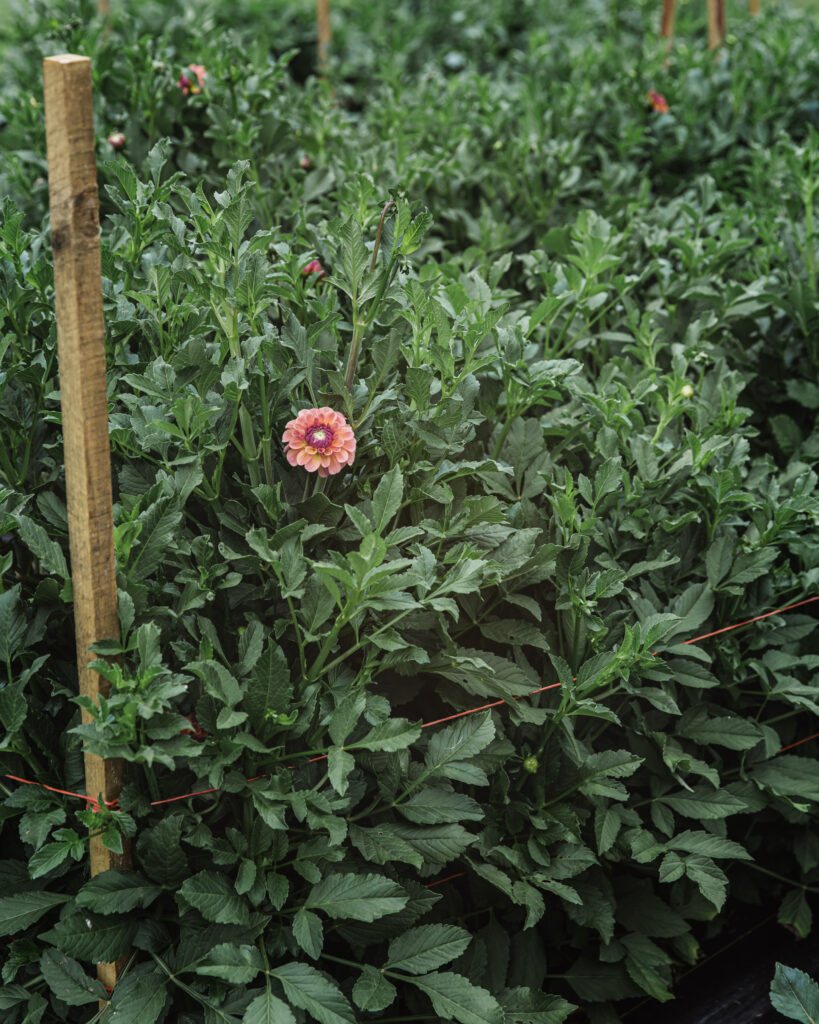
Harvest
We are currently in the thick of harvests between the end of the hardy annuals and the beginning of the summer annuals. Perhaps most excitingly, the lisianthus are finally back 🙂 Some things have fallen behind due to a handful of weddings and events this month, like ahem, the snapdragons (but they more-than pulled their weight for the past few months, forever grateful for them). Other fillers that have been rockstars this season are Bells of Ireland, Scoop Scabiosa, and CRESS! All of these have just cranked out stems, so I figure they are worth sharing here.
While we direct sow cress, it also grows wild here, and I am just obsessed with it. It makes such a pillowy base for arrangements and bridal bouquets. I also used it as a base for an arch installation this month. The base was made out of chicken wire (three 4-foot pieces). The chicken wire was wrapped burrito style with cress in the middle. This served as a based to hold East Texas Smilax, roses (in water picks), amaranth and carnations out of water, and then more cress tucked in as a green with the smilax as well (I didn’t get a photo, naturally, but the bride and her mom plan on sending some, fingers crossed).
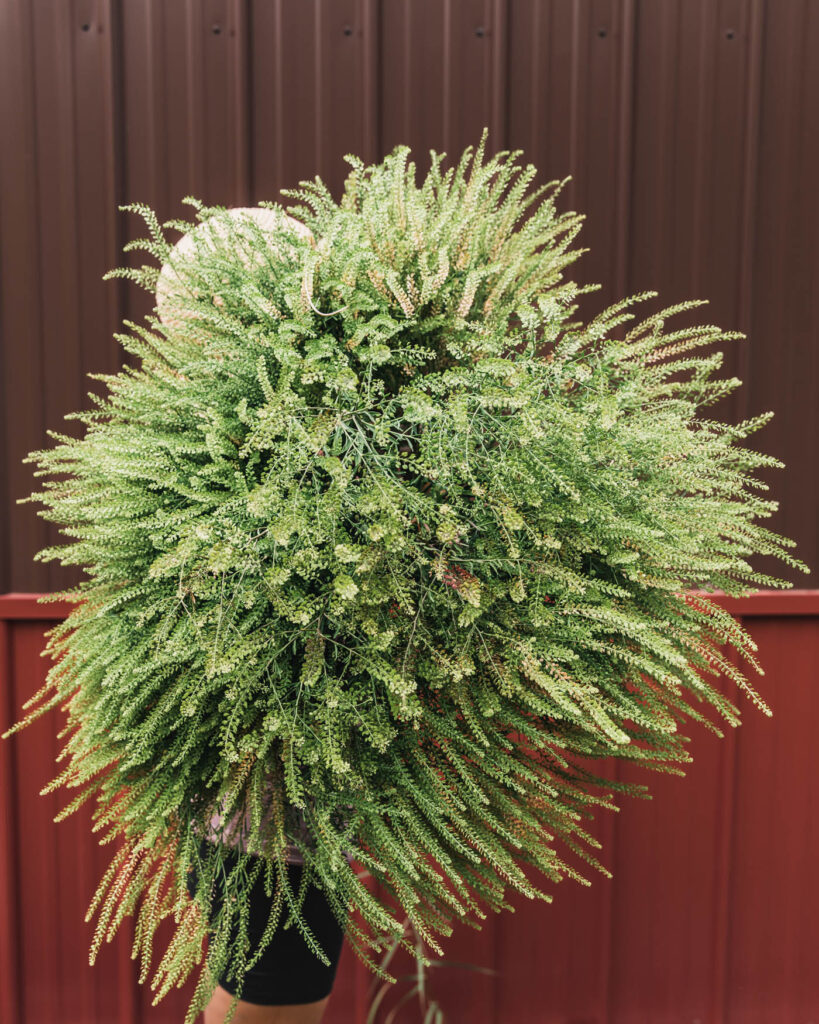
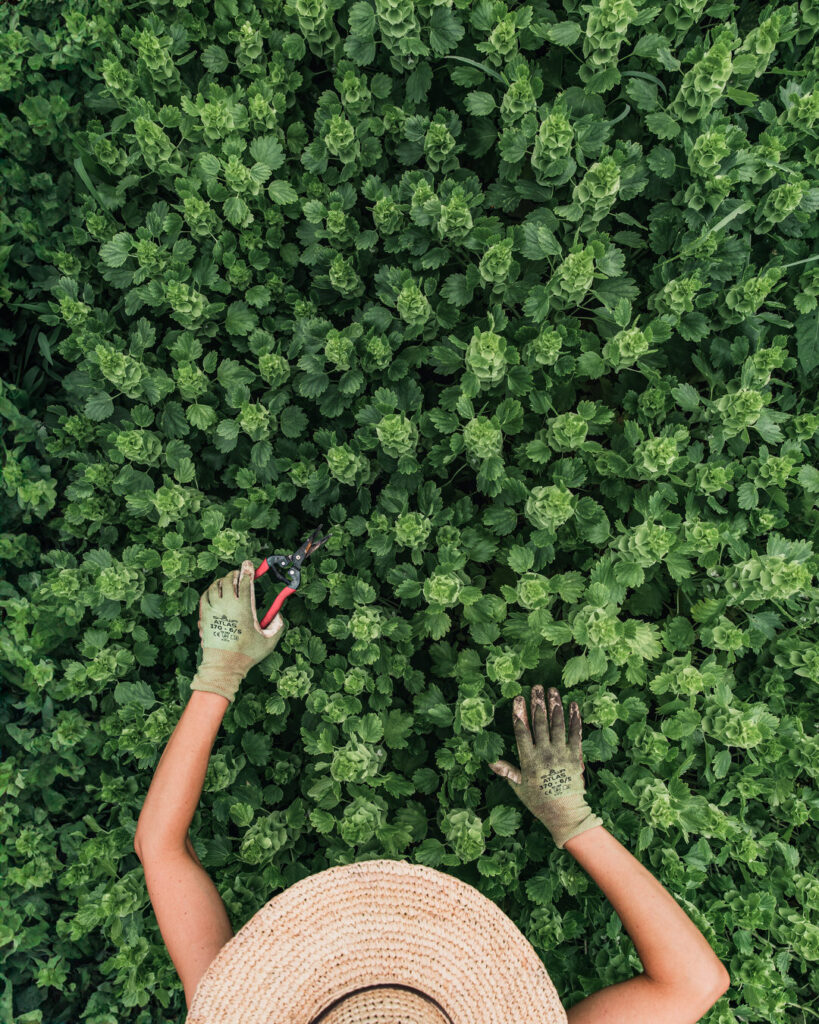
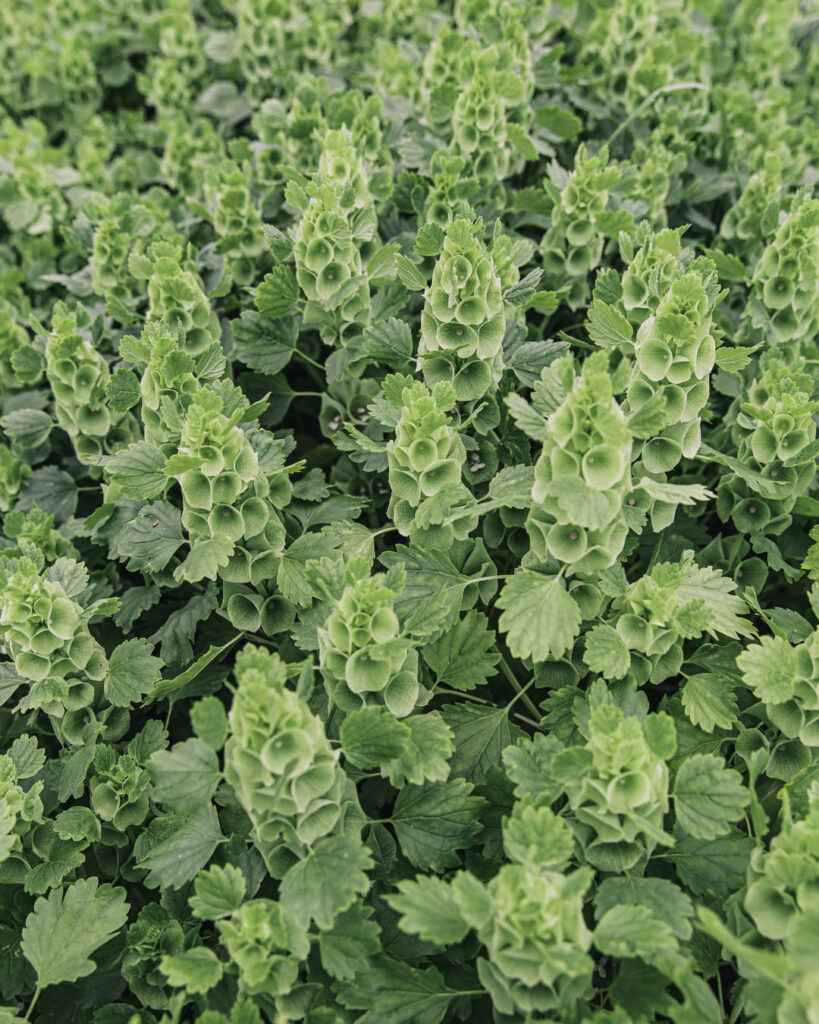
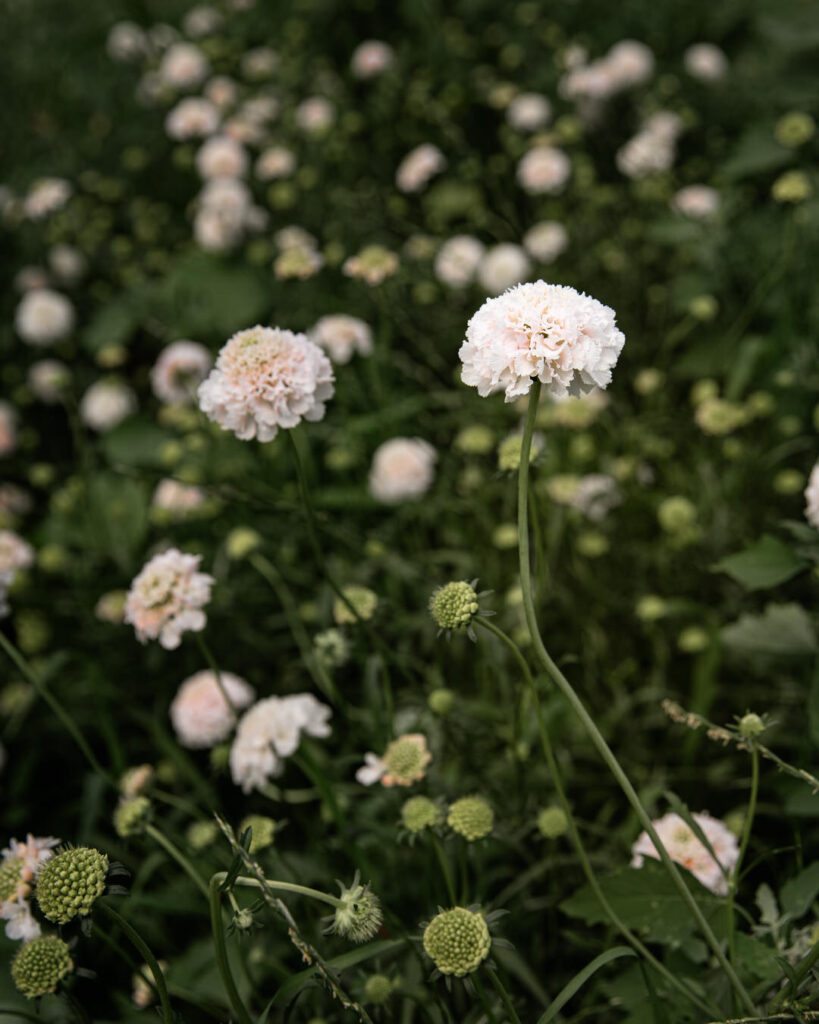

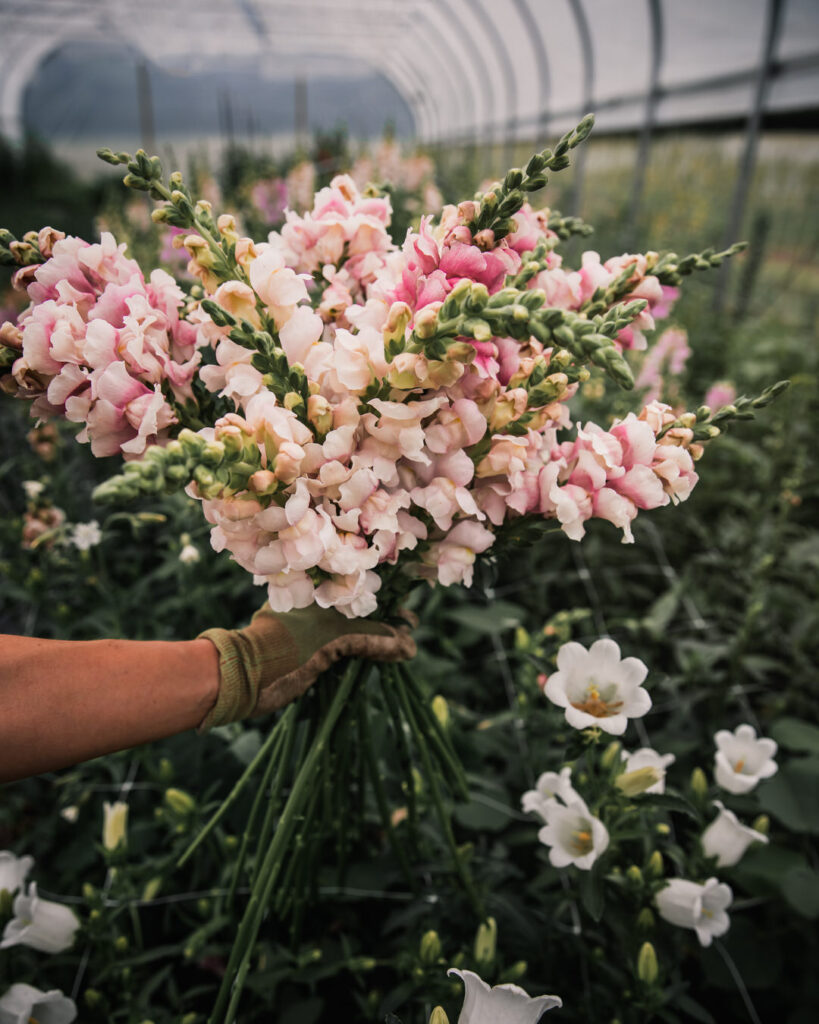
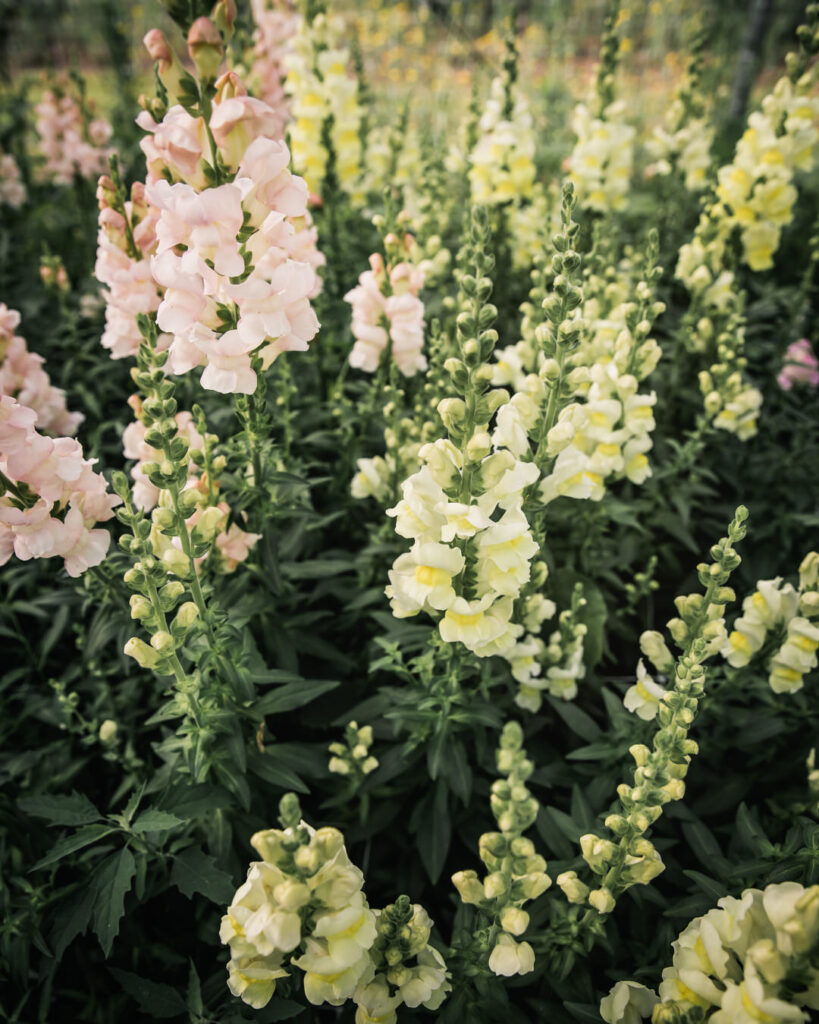

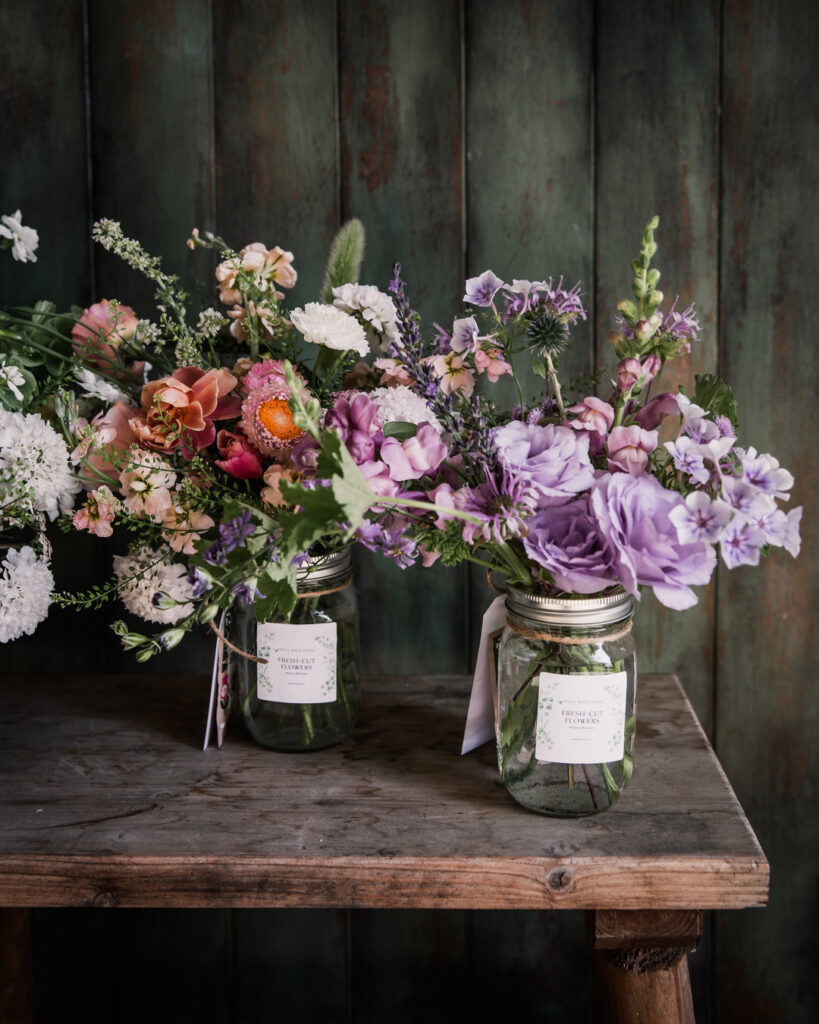
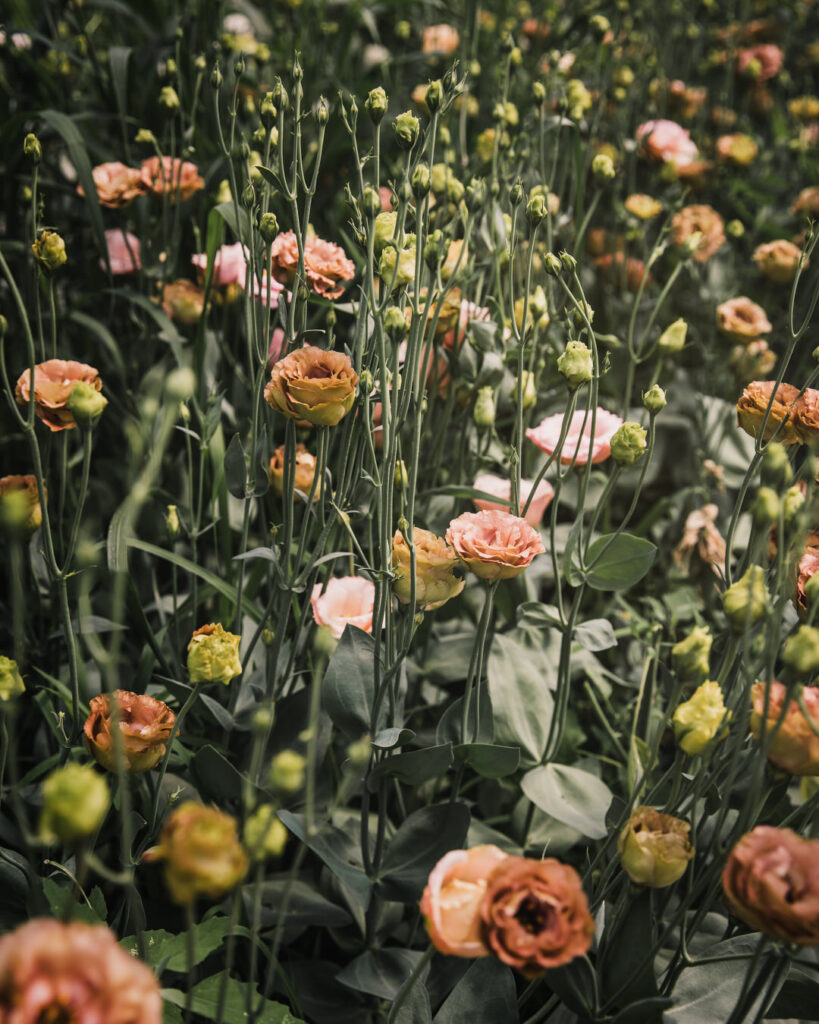

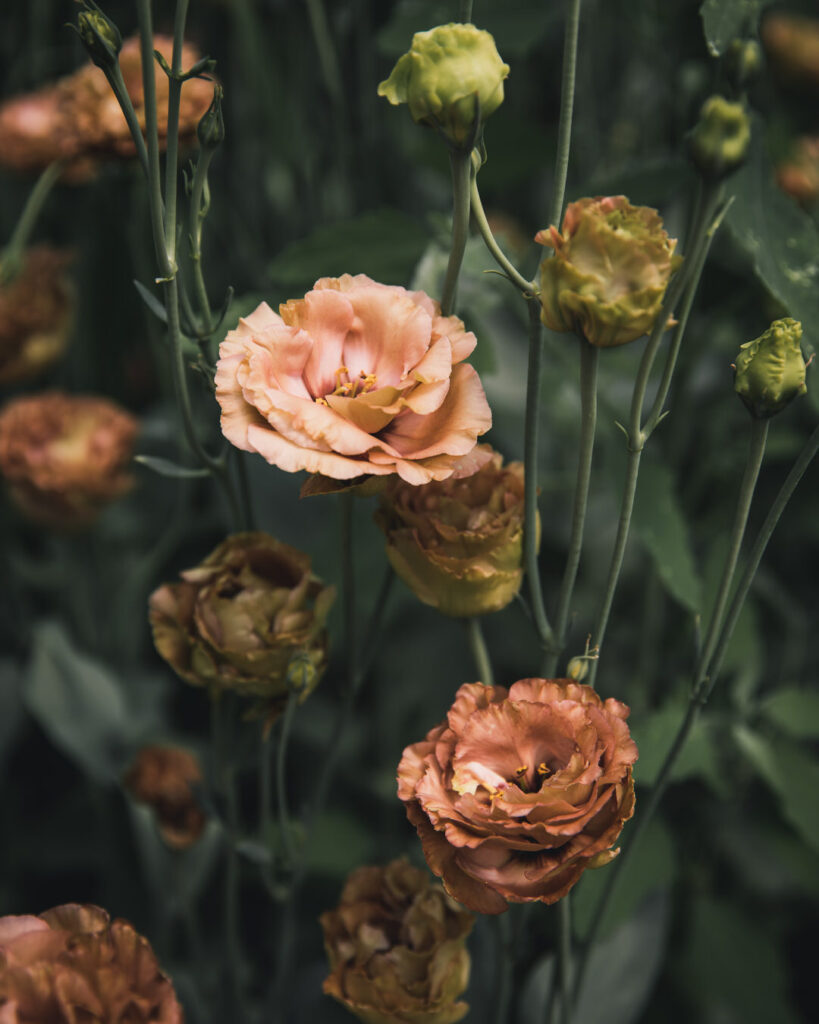
CoolBot Walk-In Cooler
In order to make the most of harvests, I thought I’d use this month to talk about one of the most-important tools on our farm: Our CoolBot cooler.
P.S., if you want a coupon for $25 off a CoolBot system, use this link.
Cooler Benefits
In my opinion, coolers are a game changer. While I think you can get away without a cooler initially, if you plant to sell your flowers at scale, eventually you’ll want one if you want maximum storage and top-quality flowers. My first season, I did not have a cooler. I would harvest and haul flowers to put in the utility room in our basement (the coldest space in the house). We did not grow any spring flowers like tulips our first season. It worked for flowers that were going out that week, but it was certainly not efficient and would not work for longer storage.
The ability to sell flowers over a longer period of time means that the cooler makes up for the initial investment quite quickly. If you plan to grow tulips and peonies, a cooler is a must in my humble opinion. When those flowers come on, they must be harvested right away. Unless you have an immediate market to sell all those blooms, you want to be able to store them (you can happily store them for a few weeks to a month!).
A cooler is also really important if you want to get into weddings and events. It allows you to harvest flowers at the perfect stage and hoard them for a longer time for an event. This makes the whole process less stressful, because you know you have flowers available and ready.
A cooler also means better-quality blooms. Most flowers prefer to “rest” or condition in a cold space prior to arranging (at least 3 to 4 hours). It’s honestly amazing how some flowers that are thought to be more wilt-prone, like nicotiana or scented geranium, perk right back up after hydrating and conditioning in a cooler. Similarly, a cooler means longer vase life for your end customer, which in turn makes you a trusted source for flowers!
What We Use: CoolBot System
While there are many cooler options, we are super fond of the CoolBot system for its ease of use and economical price tag. The CoolBot is a device that can transform an insulted room or trailer into an affordable walk-in cooler with a standard window air conditioner. Unlike a traditional walk-in cooler, repairs and/or replacements are much simpler (not requiring a special technician), since the CoolBot uses a regular air conditioner.
Whether you want to add a cooler to an existing structure, build a new structure, convert a trailer, or retrofit an existing cooler, StoreIt Cold (the company who created the CoolBot) has detailed instructions and information here. At first this seemed daunting to me, and although Matt is much-more handy than me, this company does a great job simplifying the process.
When we built our pole barn, Matt built a little shop area, which included a 9x8x8 cooler. I would say that we did not deviate from the CoolBot instructions with the exception that we did not insulate the floor (however, the entire shop area is extra insulated and it has not seemed to be an issue). In fact, I think the concrete floor is important for spills. We purchased this air conditioner and have not had any issues with it thus far.
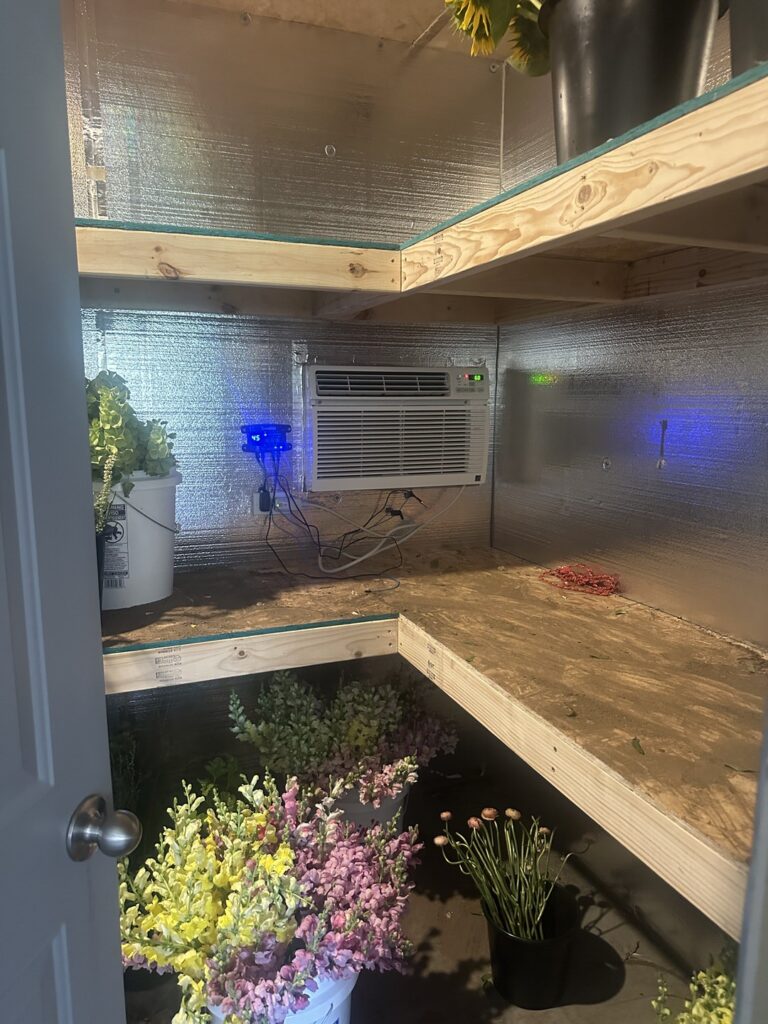
Modern-Day Root Cellar
I absolutely love having a cooler for all the reasons mentioned above, but it also serves double duty in the winter. If you do not have access to a root cellar, a CoolBot cooler can be easily converted to maintain temperatures above freezing over winter. Aside from extending life of certain vegetable crops, this room can be used to prechill bulbs and overwinter gladiolus and DAHLIAS! We pack our cooler to the brim with dahlia tubers for the winter. All that’s needed to convert a cooler into a “modern” root cellar is the CoolBot system, a pass-through thermostat like the Inkbird, and a space heater.
We actually use a dyson heater that has a built-in thermostat, but this is simply because we received this heater as a gift (and it’s admittedly super efficient). However, it’s expensive, and if it hadn’t been gifted to us, we’d have just connected an inexpensive heater to our CoolBot system.
While the heater is set to maintain 44F in the cooler, we also have this thermometer which measures the high and low temperature and humidity for the past 24 hours for monitoring. For $12, I love these little guys and I keep one in the high tunnel as well.
Using this system, you can also control the humidity with a humidifier and a humidistat controller. I keep these on hand as a backup, but we have not needed to use it thus far, as our cooler stays around 70% humidity (and if it dips, I’ll put some melted snow in there).
You can find detailed instructions on this setup here.
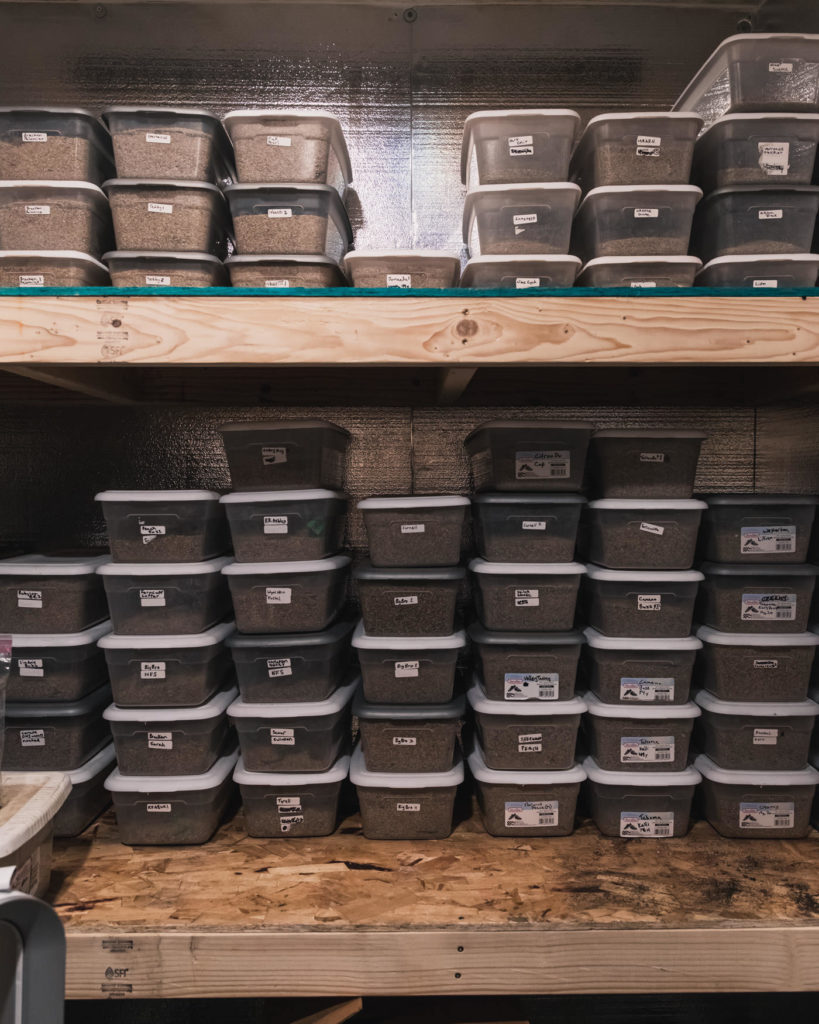
Business & Taxes
I originally removed this so as not to be redundant each month, but I’m thinking it’s important to keep it in:
Every month, I review our income and expenses and apply the profit first method (at least, that’s my goal). If you haven’t read the book, I highly suggest it, but basically for everything that comes in (revenue) you are making target allocation percentages for things like profit, owner’s comp, taxes, and expenses.
Table example:
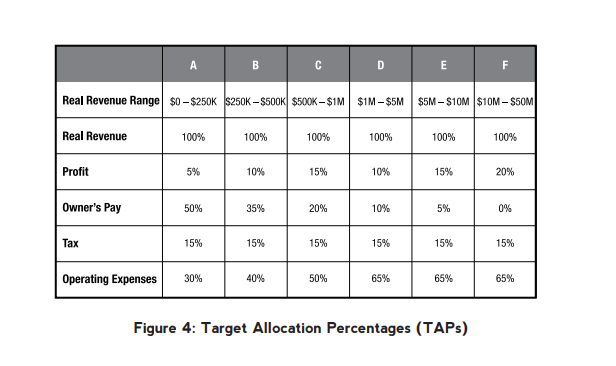
It’s actually recommended to do this twice a month, but I honestly consider it a win if I do it once and bonus twice. If those terms are foreign, that’s OK (they were for me too). He breaks it all down in a simple (and even entertaining) way. My only regret with this method is not starting it sooner. It’s given me more confidence as a business owner, especially as I do not come from an entrepreneurial family. If you’re not ready to dive on into the book, it’s important to understand your income and expenses. I don’t even use a fancy system like quickbooks, just a spreadsheet!
Wrap Up
OK, my friend, that is IT for July. Is there anything that’s unclear or you wish I would have covered?
This link will be live until the end of next month, at which point you’ll get a PDF copy, so you can always refer back it. You can also use the buttons below to save this as a PDF or print at any time.
Tip: use the find shortcut (Ctrl+F on a PC or Command+F on a Mac to search for any word or term either online or in PDF format).
Have any questions or something you want to share with me or others? I know I say this ad nauseam, but I truly believe in the power of the collective and that we all have something unique and powerful to share, so please leave a question or share a comment below. We’re all better for it, and I thank you in advance!
Cheers pal!
cLICK FOR Comments +